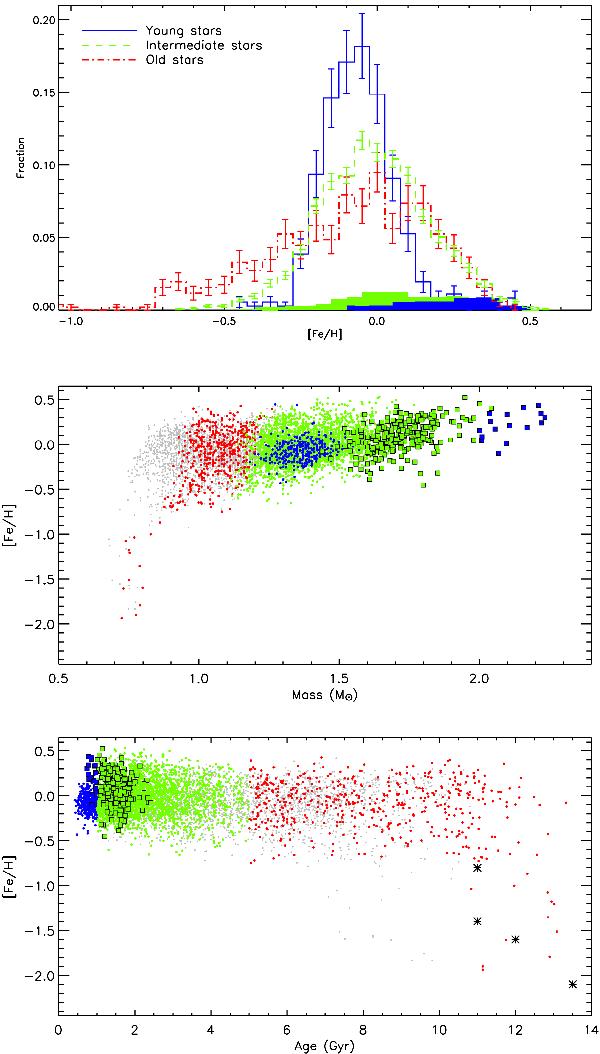Fig. 16

Top panel: MDF for stars belonging to the irfm sample divided into different age intervals. Stars having age < 1 Gyr are shown with a continuous line, 1 ≤ age < 5 Gyr with a dashed line and age ≥ 5 Gyr with a dot-dashed line. Shaded areas identify the subgroup of stars in the same age intervals as above, but with absolute magnitudes (< 2); no such bright stars are present in the old sample. Only stars with well determined ages (see Sect. 3) are used. Bars indicate Poisson errors. Middle panel: [Fe/H] versus stellar mass. Colours have the same meaning as in the top panel, with grey dots now referring to the remaining stars having more uncertain ages. Filled squares identify stars with bright absolute magnitudes (< 2). Lower panel: same symbols and colours as in the middle panel, but showing the age–metallicity relation. Shown for comparison (asterisks) are the ages and metallicities of the halo Globular Clusters studied in VandenBerg et al. (2010) (in the latter case, a different zeropoint on the age scale is possible, also depending on the input physics adopted in the stellar models employed).
Current usage metrics show cumulative count of Article Views (full-text article views including HTML views, PDF and ePub downloads, according to the available data) and Abstracts Views on Vision4Press platform.
Data correspond to usage on the plateform after 2015. The current usage metrics is available 48-96 hours after online publication and is updated daily on week days.
Initial download of the metrics may take a while.


